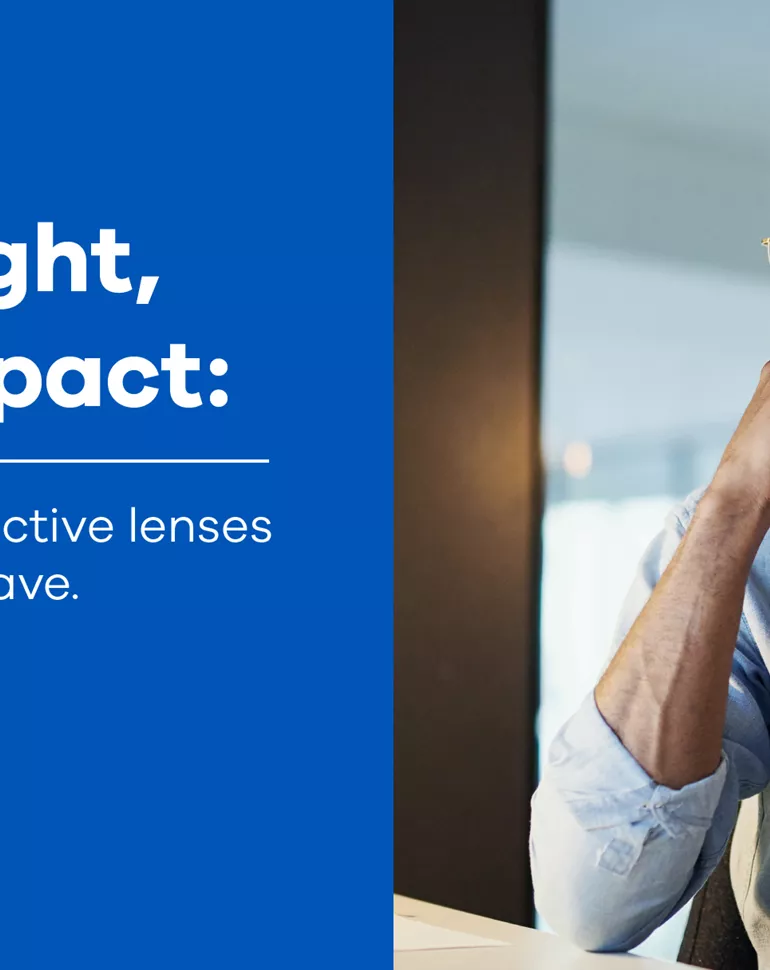Over 60% of Americans suffer from digital eye strain
With the prevalence of smartphones, tablets, TVs, and LED lights, our eyes are exposed to an unprecedented amount of high-energy blue light, which can cause digital eye strain in both adults and children. Blue light is difficult for the human eye to focus on, leading to headaches, tiredness, and blurry vision.
Digital eye strain, otherwise known as Computer Vision Syndrome (CVS), results from excessive screen use. Its effects are widespread – recent reports show that more than 60 percent of Americans experience symptoms of CVS. Digital eye strain can kick in as quickly as two hours into using your screen.
Our eyes have evolved to process large amounts of natural light. Artificial blue light is a different story.
Digital eye strain among children and adults
The Centers for Disease Control and Prevention (CDC) reports that:
- Children aged 8 – 10 spend an average of 6 hours per day viewing screens
- Kids aged 11 – 14 spend an average of 9 hours per day viewing screens
- Youths aged 15 – 18 spend an average of 7.5 hours per day viewing screens
This screen time can lead to symptoms of digital eye strain in less than two hours. Studies also show that adults spend 11 hours a day viewing screens. They're paying bills online, and managing their households via apps, and most adults have jobs that require them to spend time on computers.
How you can help your patients
Many of your patients may not realize their symptoms of DES/CVS arerelated since many symptoms, such as itchy eyes, are easily confused with another cause, like allergies or dry eyes.
Take a few minutes to educate your patients on the impact of digital eye strain and help them diagnose whether or not they are experiencing eye strain symptoms. Continue to recommend the “20-20-20 Rule” and limit unnecessary screen time whenever possible. Another opportunity is offering lenses that can help reduce the stress caused by HEV blue light.
Photochromic lenses are more than UV protection built into a standard pair of glasses. Photochromic lenses also help attenuate harmful indoor and outdoor blue light.
The convenience of photochromic lenses
The best way to protect the eyes, eyelids, and skin around the eyes from sun-related damage is to wear quality sunglasses that block 100% UV rays and shield the eyes from blue light. And remember: UV radiation can penetrate clouds, so sunglasses are still necessary on overcast and cloudy days.
Photochromic lenses are the most convenient choice for daily eye protection due to their unique ability to adapt to changing light conditions. These lenses are made with special materials that react to UV light, causing them to darken when exposed to sunlight and lighten when indoors or in low light conditions. Photochromic lenses offer several benefits over traditional lenses, including:
- Convenience: With photochromic lenses, switching between glasses and sunglasses is unnecessary as lighting conditions change.
- Eye Protection: Photochromic lenses block 100% of harmful UV rays from the sun, helping to prevent eye damage and reducing the risk of eye-related conditions like cataracts and macular degeneration.
- Comfort: Reducing eye strain by adapting to changing light conditions, photochromic lenses provide a more comfortable viewing experience.
- Versatility: Photochromic lenses are available in various styles and prescription strengths, making them an excellent choice for anyone looking for a versatile and practical eyewear solution.



